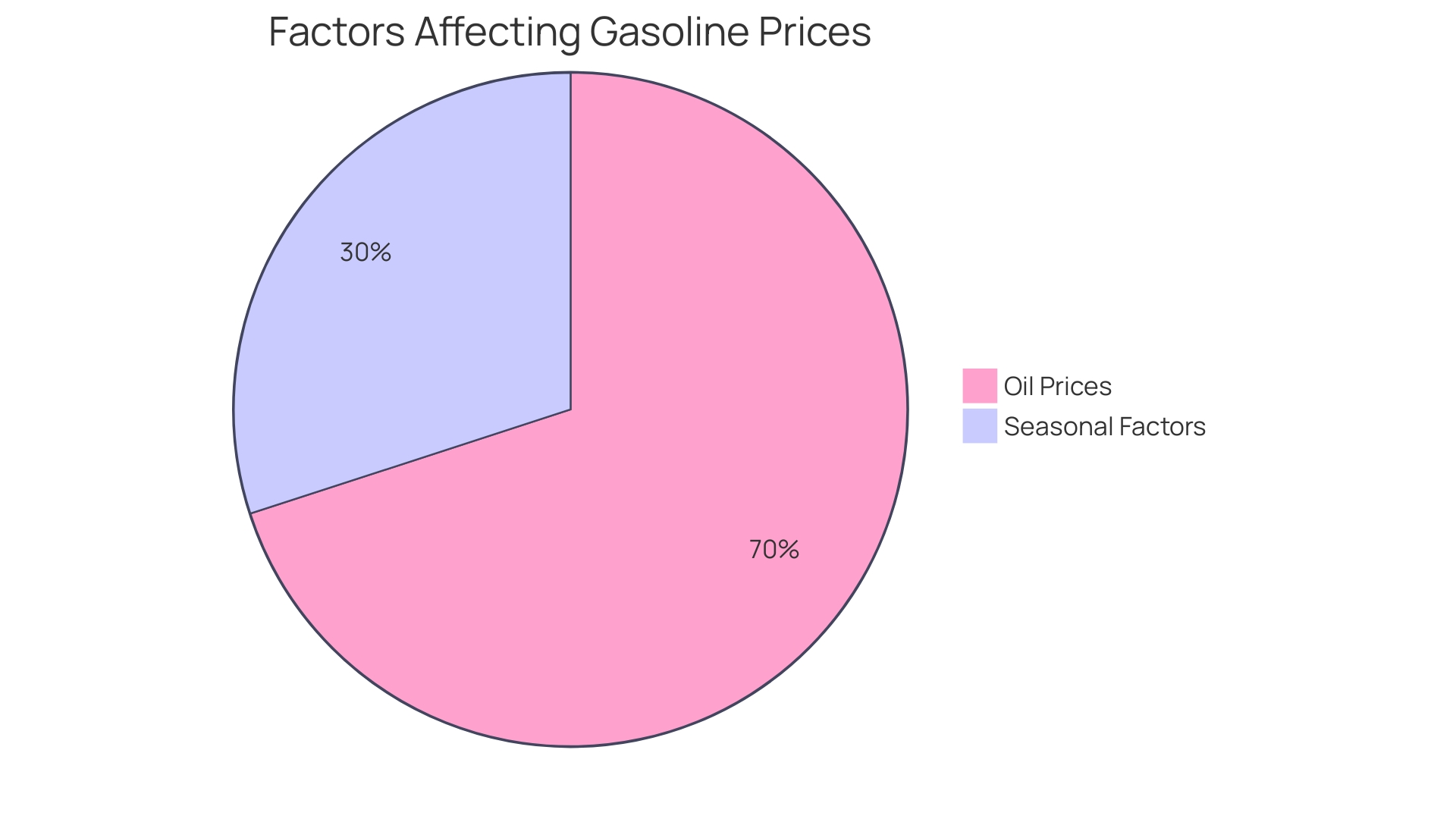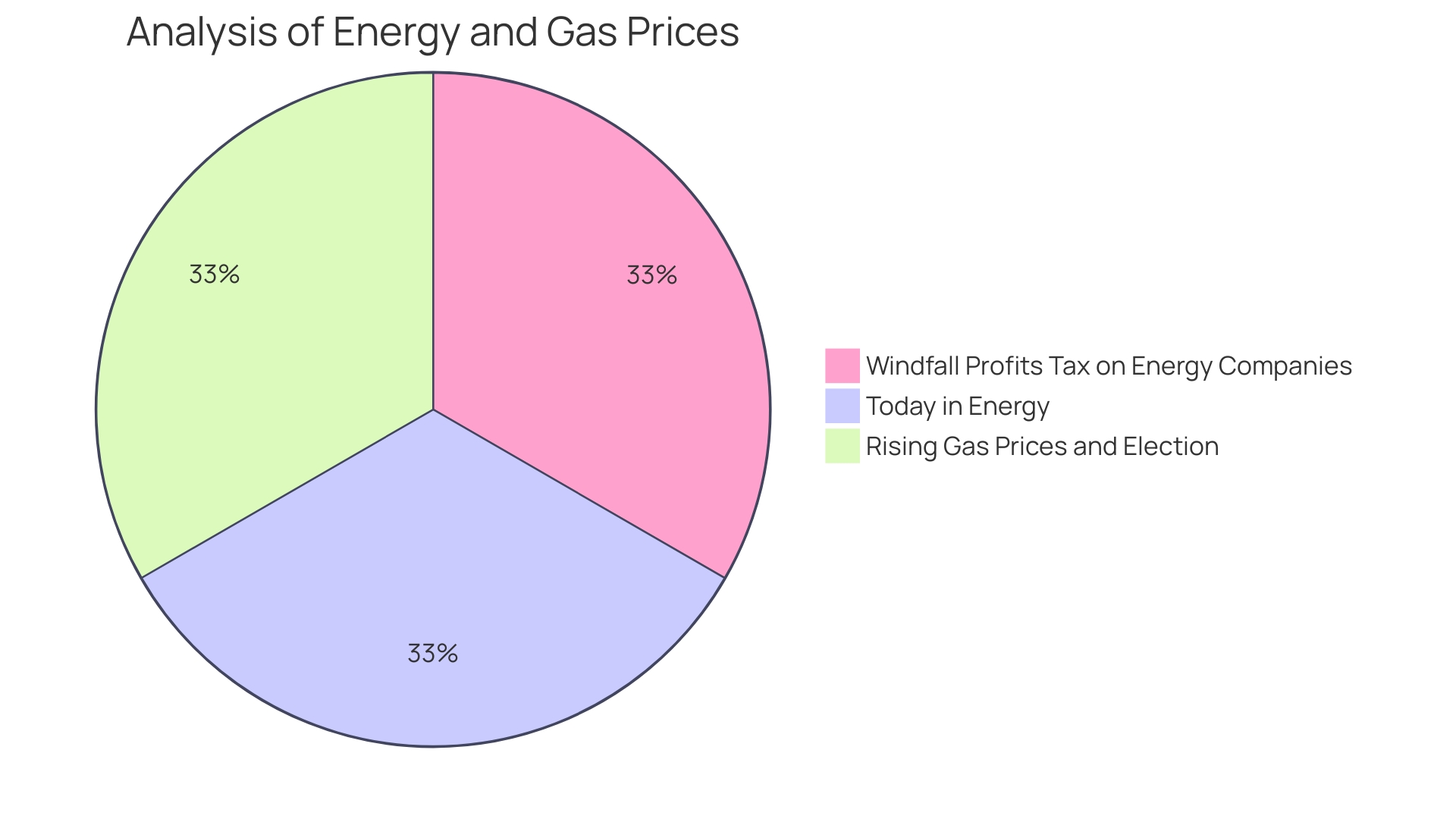Introduction
Gas prices in Reedsburg, WI are a topic of great interest for residents and businesses alike. The fluctuating prices, influenced by various factors including global oil prices, supply and demand, and local market conditions, have a significant impact on fuel consumption and budgeting. In recent weeks, there has been a noteworthy decrease in the national average price of gasoline, marking the 13th consecutive week of falling gas prices.
Diesel prices have also seen a decrease, potentially bringing the average price of gasoline below $3 per gallon. This positive development has implications not only for consumers but also for local businesses, as lower fuel prices can lower operational costs. Understanding the historical trends, factors influencing gas prices, and their impact on the local economy and residents is crucial for making informed decisions and planning for the future.
By analyzing these complexities, individuals and businesses in Reedsburg can navigate the ever-evolving landscape of the energy sector with foresight and responsibility.
Current Gas Prices in Reedsburg, WI
The dynamics of gas costs are a crucial concern for residents and businesses in Reedsburg, WI, with daily fluctuations influenced by an array of factors including global oil costs, supply and demand, and local market conditions. A thorough comprehension of these movements is not only advantageous for efficient fuel consumption but also vital for budgeting purposes. The recent trend, as highlighted by GasBuddy, shows a significant decrease in the national average cost of gasoline, decreasing 8.6 cents from the previous week to $3.03 per gallon. This downward trend indicates the 13th straight week of decreasing gas prices, with the national average now 26.9 cents less than the previous month and 6.8 cents per gallon below the cost from a year ago. Moreover, the cost of diesel has also experienced a decrease, standing at $3.99 per gallon, which is 80 cents lower compared to last year. This positive development comes as the holiday season approaches, potentially lowering the average cost of gasoline below $3 per gallon for the first time in years, offering a respite to consumers and the economy. It is important to highlight that oil prices, which play a crucial role in determining gasoline prices, have been decreasing, thus leading to the reduction in fuel expenses. Additionally, seasonal changes also play a role in the pricing of gasoline. Meanwhile, in the context of local businesses, the impact of gas costs reaches beyond transportation. For example, Cisler Sweets, a family-run confectionery business in Wisconsin, with annual sales exceeding $25 million, is likely impacted by these fluctuations as they distribute products across various outlets. The decrease in fuel prices could potentially lower operational expenses for such businesses, ultimately benefiting consumers. As fuel costs continue to evolve, staying updated with these changes is crucial for economic planning and decision-making.

Historical Trends in Reedsburg Gas Prices
Exploring the historical data of gas costs in Reedsburg, WI reveals clear patterns and fluctuations that assist in deciphering the complexities of fuel expenses. This retrospective analysis reveals not only the typical seasonal oscillations but also sheds light on the broader economic influencers that drive changes in fuel pricing. For example, GasBuddy's recent report emphasizing a 13-week consecutive decrease in the national average cost of gasoline underscores the dynamic nature of fuel markets. As observed, the average cost of gasoline dipped to $3.03 per gallon, a notable decrease from previous months, with the prospect of falling below the $3 threshold. In the same way, the cost of diesel has experienced a notable decrease to $3.99 per gallon, an 80-cent reduction from the previous year. These trends hold profound implications for forecasting and strategic planning, enabling individuals and businesses to make informed decisions and prepare for the road ahead in the economic landscape.

Comparing Reedsburg Gas Prices to State and National Averages
To grasp the dynamics of gas prices in Reedsburg, WI, it is vital to juxtapose them with state and national trends. A recent exploration of the data uncovers that Reedsburg's fuel expenses are impacted by a multitude of factors, including seasonal variations and energy source efficiencies. For instance, as of October 31, 2023, the national average for gas fell by 38 cents from the previous month, with projections indicating a further decline. This trend is reflected by GasBuddy's report of a resurgence in $2.99 gasoline at numerous stations nationwide. These shifts are attributed to decreased consumption during colder months and the transition to winter gasoline blends.
Additionally, heating systems, a significant energy expense in homes, shed light on how energy type and technology efficiency influence expenses. Electric heat pumps, which transfer heat rather than generate it, operate optimally in mild temperatures. Their efficiency diminishes in extreme cold, leading to higher electricity usage and costs. Conversely, natural gas systems, which create their own heat, maintain consistent performance regardless of external temperatures.
Economic developments also play a role. For instance, traffic increases and construction delays in places such as Eau Claire, WI, and Rice Lake, WI, not only impact businesses but could also influence fuel consumption patterns. These scenarios highlight the interdependence of local infrastructure projects, seasonal energy demands, and broader economic activities with gas costs.
Examining the cost of gas within this wider framework provides a comprehensive understanding that goes beyond mere comparisons. It provides Reedsburg's residents and businesses with knowledge about the complex nature of fuel expenses, assisting them in making informed choices.

Factors Influencing Gas Prices in Reedsburg, WI
'Gasoline costs are influenced by a intricate interplay of factors that extend well beyond the local context of Reedsburg, WI.'. The pricing of gasoline is closely linked to global crude oil markets, which are the primary driver of expenses. As indicated by GasBuddy, the recent decline in gasoline expenses demonstrates a reduction in crude oil prices. Moreover, refinery operations, which encompass both capacity and maintenance schedules, have a vital impact on determining the availability and cost of gasoline. Supply chain aspects, such as transportation expenses, are also crucial, as they impact the final value of fuel at the pump.
Taxes, both regional and federal, contribute to the overall cost, making them an important factor in the variations in costs in the area. Furthermore, market dynamics in the area can impact gas costs. This comprises demand variations, which might be affected by factors such as the economic health of the area and the seasonality of fuel usage.
Recent news indicates an intriguing pattern: gas costs have been declining consistently over numerous weeks, bringing a sense of relief to consumers and businesses alike. This decline is evident in the national average cost of gasoline and diesel, with potential favorable consequences for the regional economy. As an example, the decrease in diesel costs is especially remarkable as it directly affects the expense of transporting goods, thereby influencing the market dynamics in the area and potentially resulting in reduced costs for consumers.
Furthermore, natural gas, often co-produced with crude oil, is increasingly recognized as a critical element of the energy transition, providing cleaner burning options for electricity generation and heating. Its role as a bridge fuel to a sustainable energy future, its cost-effectiveness, and its diverse applications from residential heating to power generation underscore its growing importance in the global energy mix.
In Reedsburg, WI, and comparable communities, these national and global trends reverberate throughout the economy of the area, impacting not just fuel costs but also the wider economic scenery. Being knowledgeable and comprehending the intricate factors behind gas costs is crucial due to the link between worldwide energy markets and regional economies.
Impact of Gas Prices on Local Economy and Residents
Gas costs are a crucial economic indicator with immediate and tangible effects on both the local economy and its residents. When gas prices go up, transportation expenses for businesses escalate, resulting in an uptick in the price tags of goods and services. This increase ultimately pinches household budgets, compelling families to tighten their belts on discretionary spending, which can then lead to a slowdown in economic activity. On the opposite side, when gas costs decrease, both businesses and consumers breathe a sigh of relief. Decreased fuel expenses mean that individuals have more disposable income for other expenditures, and businesses can enjoy reduced operational costs.
When analyzing the impacts of fluctuations in gas costs, it is crucial to take into account the real-life experiences of communities. For instance, the research conducted by Associate Professor Martina Angela Caretta in Appalachia reveals how residents living near gas extraction and distribution infrastructures are directly impacted. Her work underscores the importance of understanding how energy policies and practices influence local economies and ecosystems. Moreover, the discussions surrounding gas costs have taken center stage in political debates, emphasizing the need for more domestic oil and gas production. Although it is frequently mentioned that domestic manufacturing has little effect on global prices, the truth for numerous individuals, particularly those with lower and moderate incomes, is that increasing gas costs can be harmful. The majority of these households possess cars, and elevated gas costs imply increased expenses at the fare box for mass transit users.
As we navigate the complexities of gas cost dynamics, we must also consider broader economic trends. For example, high interest rates and mounting debt are obstacles to the American dream, making basic needs less affordable for many, especially the most vulnerable. The New York Fed reports that household debt has hit a record high of $17.5 trillion. This financial strain can be worsened by the rising cost of gasoline, as transportation frequently constitutes a substantial portion of an individual's or family's budget. Hence, comprehending and strategizing for the fluctuations of gas costs is not only a matter of economic analysis, but also one of social responsibility and foresight.

Predicting Future Gas Price Trends in Reedsburg, WI
Comprehending the complexities of gas cost trends necessitates a multifaceted strategy, taking into account a variety of influential factors. Global oil market trends play a pivotal role, as do geopolitical events that can disrupt supply chains. Weather patterns also impact production and distribution, alongside the evolving landscape of fuel regulations. These elements collectively influence the dynamics of gas costs.
For instance, the energy sector is witnessing significant changes, with natural gas demand projected to rise by over 20% through 2028, driven by LNG exports, exports to Mexico, and power generation. This growth is supported by a robust network of assets, including a substantial 700 Bcf of operated natural gas storage. Conversely, mature markets in Asia Pacific, Europe, and North America saw peak gas demand in 2021, with a forecasted annual decline of 1% through 2026. The shift towards renewable energy sources and enhanced energy efficiency is contributing to this downward trend. Europe's pivot away from Russian piped gas has necessitated alternate solutions for energy security, spotlighting the geopolitical influences on gas markets.
Additionally, the concentration of growth in rapidly expanding Asian markets and select Middle Eastern and African economies signifies a shift in global demand patterns. China is poised to represent nearly half of the global gas demand increase between 2022 and 2026, emphasizing the significance of geopolitical and economic developments. The anticipated increase in LNG capacity is expected to ease market tightness and influence pricing dynamics by 2025 and 2026.
Local factors, such as infrastructure developments, can also impact gas costs. Delays in construction and installation of essential services can disrupt local economies and necessitate strategic adjustments by businesses. These microeconomic considerations, coupled with macroeconomic trends and geopolitical changes, highlight the intricacy of predicting gas costs.
By staying abreast of these diverse factors, individuals and businesses in Reedsburg, WI, can formulate more informed predictions regarding future gas price movements. Such insights are invaluable for planning, fuel consumption strategies, and budgeting, positioning them to navigate the ever-evolving landscape of the energy sector.
Conclusion
In conclusion, understanding the dynamics of gas prices in Reedsburg, WI is crucial for residents and businesses alike. The recent decrease in the national average price of gasoline, marking the 13th consecutive week of falling gas prices, brings potential relief to consumers and the local economy. The decrease in diesel prices also has implications for businesses, as it can lower operational costs.
Historical trends reveal distinct patterns and fluctuations that aid in forecasting and strategic planning. Comparing Reedsburg's gas prices to state and national averages provides valuable context and insights into the multifaceted nature of fuel costs.
Factors influencing gas prices extend beyond the local context, with global crude oil markets being the primary driver of costs. Refinery operations, supply chain aspects, taxes, and local market dynamics also play significant roles. The impact of gas prices on the local economy and residents is tangible, with rising prices leading to increased transportation costs and tightened household budgets.
Conversely, falling gas prices provide relief by reducing operational costs for businesses and freeing up disposable income for individuals.
Predicting future gas price trends requires considering an array of influential factors, including global oil market trends, geopolitical events, weather patterns, and evolving fuel regulations. The shift towards renewable energy sources and enhanced energy efficiency contributes to downward trends in gas demand. Local factors, such as infrastructure developments, can also affect gas prices.
Staying informed about these factors equips individuals and businesses in Reedsburg with insights for planning, fuel consumption strategies, and budgeting in the ever-evolving energy sector landscape.
Stay informed and optimize your fuel consumption strategies with Universal Fuel Technologies!




